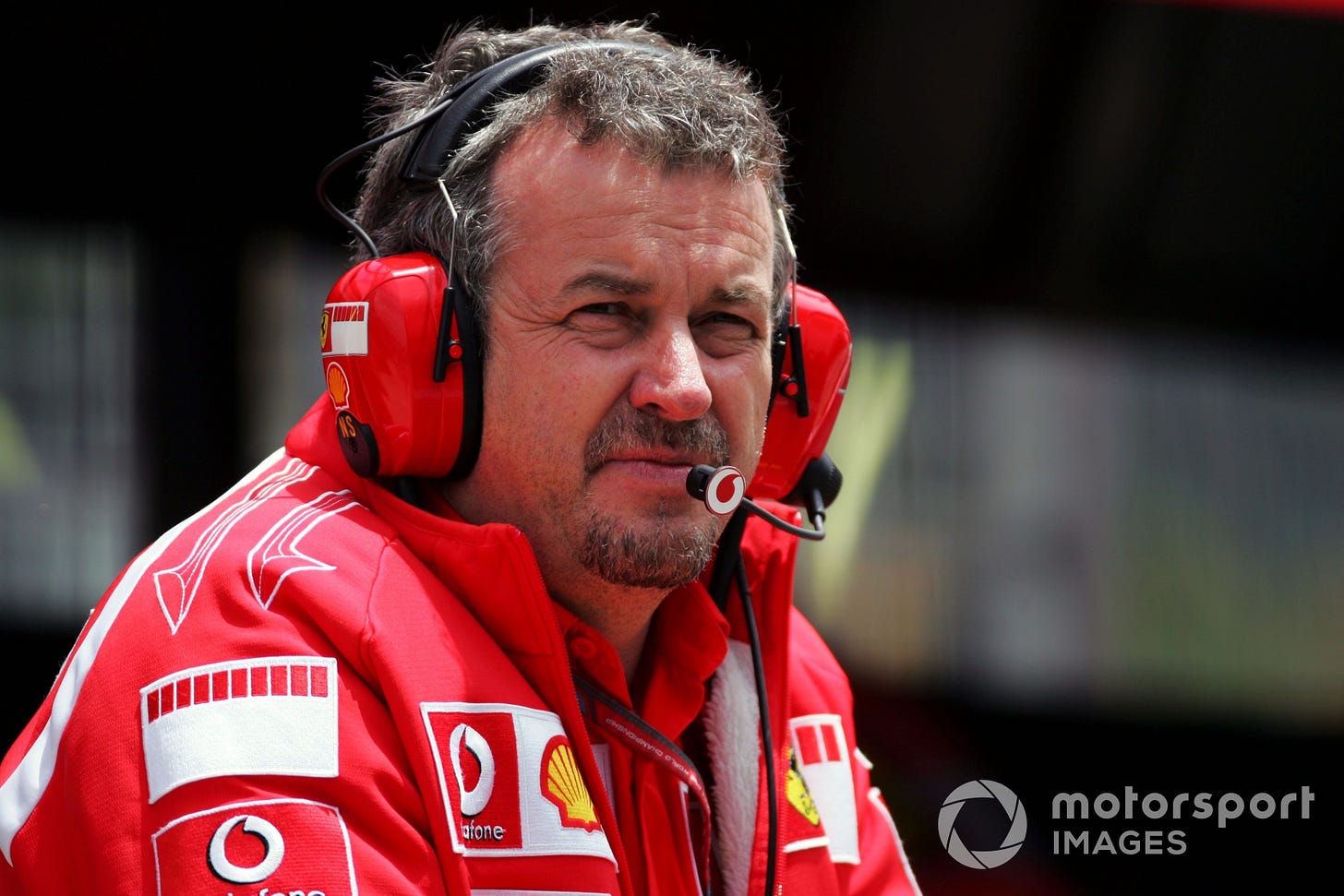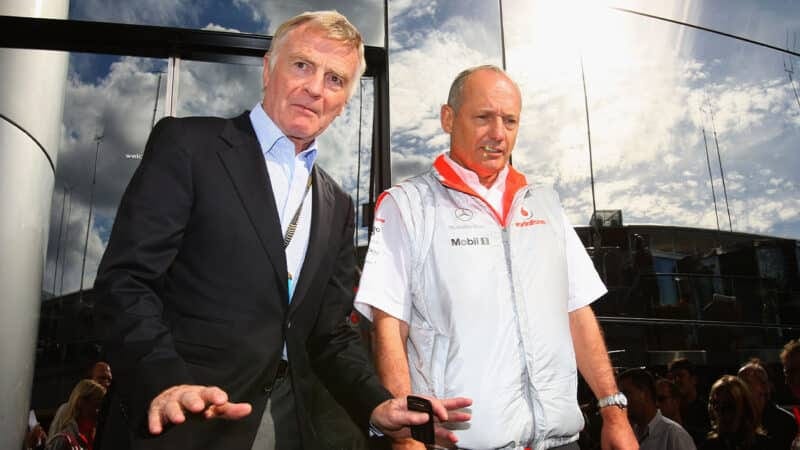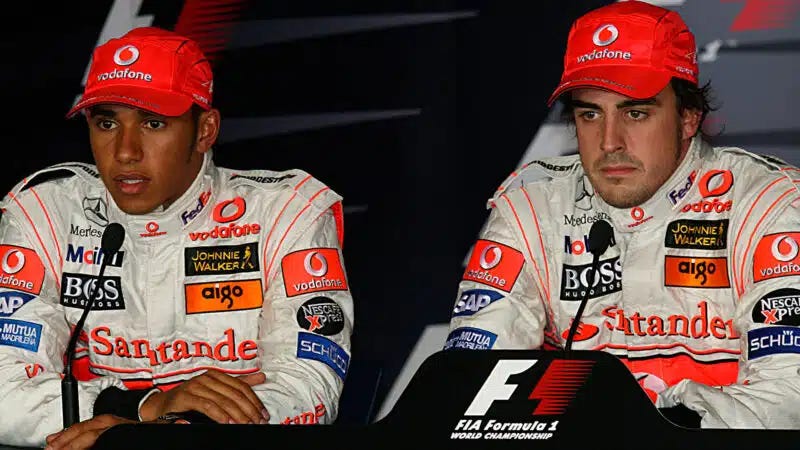Spygate. Many Formula 1 fans will recognize the name, and many still discuss this major event to this day. As one of Formula 1's biggest controversies, Spygate holds the record for resulting in the largest fine ever imposed in sporting history.
The 2007 espionage crisis was sparked by accusations made by Ferrari, one of F1's teams, against rival McLaren, alleging that confidential technical information had been stolen.
How it started
It was in early June 2007 when Trudy Coughlan walked into a small copy shop located in the picturesque hills of Surrey County, a stack of 780 highly detailed pages firmly held in the palms of her hands. There, she politely asked Gary Monteith—a middle-aged man who ran the store—to have the details of each document transferred onto CD-ROMs. It was a harmless request, one that many copy shop employees across the country would have completed with little to no hesitation. It was a task that, under typical circumstances, might have only elicited a long, tiresome sigh from someone having to complete such a laborious job while most of the county remained bundled under their covers, still deep in sleep.
Unfortunately for Trudy, Gary Monteith was a huge Formula 1 fan. And not just any Formula 1 fan, but a proud and long-standing supporter of the prancing horse, Scuderia Ferrari. As he took hold of the 780 pages, he couldn't help but notice the unmistakable black horse scattered on each and every page. As he glanced over the stack of documents, he realized that each contained schematic drawings, technical reports, pictures, and financial information about the newest Ferrari car. Hundreds of millions of pieces of developmental information now lay in his open hands.
Monteith didn’t know much about the technicalities of these documents, but something didn’t sit right as he flipped through the detailed pages. However, there was one thing he was sure of: Ferrari’s headquarters was located in the small town of Maranello, 1,404.96 kilometers away, far from his current position in Surrey. Too far for any of this to make sense.
It was only after a quick Google search and just the right amount of URL clicks that he landed upon the eye-opening information. Trudy was married to McLaren’s Head Chief Designer, Mike Coughlan, and their headquarters were just down the road. Something about this didn’t feel right to Monteith. How in the world did a rival team come across hundreds of pages worth of confidential information, stamped and branded with the famous black horse? The proud Tifosi knew he needed to do something. It only took him a couple of minutes to locate the email address for the sporting director at the time, Stefano Domenicali, and with suspicion flowing in his veins, he typed up the history-changing email.
Subject: INDUSTRIAL ESPIONAGE
Vengeance is a powerful emotion
Similarly to Monteith, I had the same thoughts when I first learnt about this event a few years back: how did McLaren come to acquire the highly detailed and confidential documents of their rival team, situated in a country thousands of kilometers away? Well, it comes down to one name: Nigel Stepney.
Nigel Stepney was an Englishman born in the small town of Ufton in Warwickshire, England. Having worked for a plethora of racing teams, Stepney first started his career as a team manager and chief mechanic at JRM Racing—a World Endurance Championship (WEC) race team. He later transitioned to Formula 1 as a mechanic at Shadow Racing, before moving to Lotus, then Benetton, and finally finding himself at Scuderia Ferrari in the early 1990s as race and test technical manager.

It was in 2006 when Jean Todt, technical director, Ross Brawn, and chief designer Rory Byrne left at the end of the year. Having devoted 15 years and played a major role in the creation of the powerhouse Ferrari team, Stepney believed he was eligible and worthy of a promotion—one that had already been promised to him. However, when he wasn’t given a role that met his expectations, feelings of betrayal fueled his desire for revenge.
These events ultimately led Stepney to steal the 780 documents and hand them over to his McLaren contact, Mike Coughlan. As they came together, the plan to try and secure jobs at another team arose.
Thanks to Monteith, with Domenicali now aware of the situation and the Ferrari legal team working overtime to resolve the matter, it was decided that a civil court order would be obtained, and Ferrari's lawyers would search Mike Coughlan's home to confiscate any other proprietary materials found.
Once informed of the raid, Ron Dennis—McLaren's team principal—was struck with nerves and took quick action to suspend Mike Coughlan. It was in that same week that the FIA announced it was opening an official investigation.
On July 12th, Max Mosley—the president of the FIA at the time—advised McLaren that they were to attend a meeting at the World Motor Sport Council at the Place de la Concorde in Paris, France, to answer the charge of unauthorized possession of documents. With only two weeks to prepare, Dennis felt the stress and intensity of the situation and assembled a team of lawyers to join him.
It was after a grueling session of accusations and questions directed at Dennis by Mosley on July 26th that the FIA came to the conclusion that, although McLaren had been in possession of these 780 documents, there was no evidence to confirm that such information had been used by the papaya engineers.
Some may have thought this was the end of it. McLaren, like a child, had been told off by their parent, and Dennis walked out of the Place de la Concorde without any serious punishments being inflicted. He was a happy man—the last thing he would have wanted was a ban from Formula 1. But this was not the last time Dennis would be in Paris.
Alonso vs Hamilton
Now, what did Alonso vs. Hamilton have to do with Spygate? Well, as a matter of fact, it has everything to do with it. In 2007, rookie Lewis Hamilton found himself alongside Fernando Alonso. Hamilton—young and cocky—did not see himself as the number 2 driver, and that, in itself, did not sit well with veteran Alonso. Tension between the two drivers was tangible, and after multiple incidents both on and off the track, Alonso felt as though his team was against him. He demanded that Dennis put Hamilton in his place and threatened that, if this did not happen, he would make it known that the contents of the Ferrari dossier had been circulated within the McLaren team, and that he had email evidence to prove it—evidence that the FIA did not have when they originally charged McLaren.
Scared, Dennis did the one thing no one expected him to do. He called Max Mosley and told him about the email contents—emails in which Max was already aware. As a result, a second meeting was scheduled to take place on September 13th.
It was now quite obvious to everyone that McLaren was guilty. But the real question was: how would they be punished? The 2007 season was nearing its end, and the 2008 car was already in development. Mosley pressed for a racing ban, but the issue of McLaren’s employees was in the back of the council's minds. If McLaren were banned, thousands of their employees would be punished as well—something the council did not want to happen.
So instead, a solution arose. What better way to punish someone than with a fine?
On September 13th, 2007, McLaren was fined the largest fine in sporting history—to this day—of $100 million.
It was a number that shocked everyone. Even for Formula 1, this was an astounding amount, and unfortunately for Mosley, his determination to have Dennis banned was not successful.
Spygate remains one of the most significant scandals in Formula 1 history and serves as a reminder of the fine line between rivalry and betrayal in elite sports, with its repercussions echoing throughout the motorsport world. As Formula 1 continues to evolve, the lessons of Spygate remain as relevant as ever, underscoring the importance of fair play in a sport where competition runs at full throttle.






